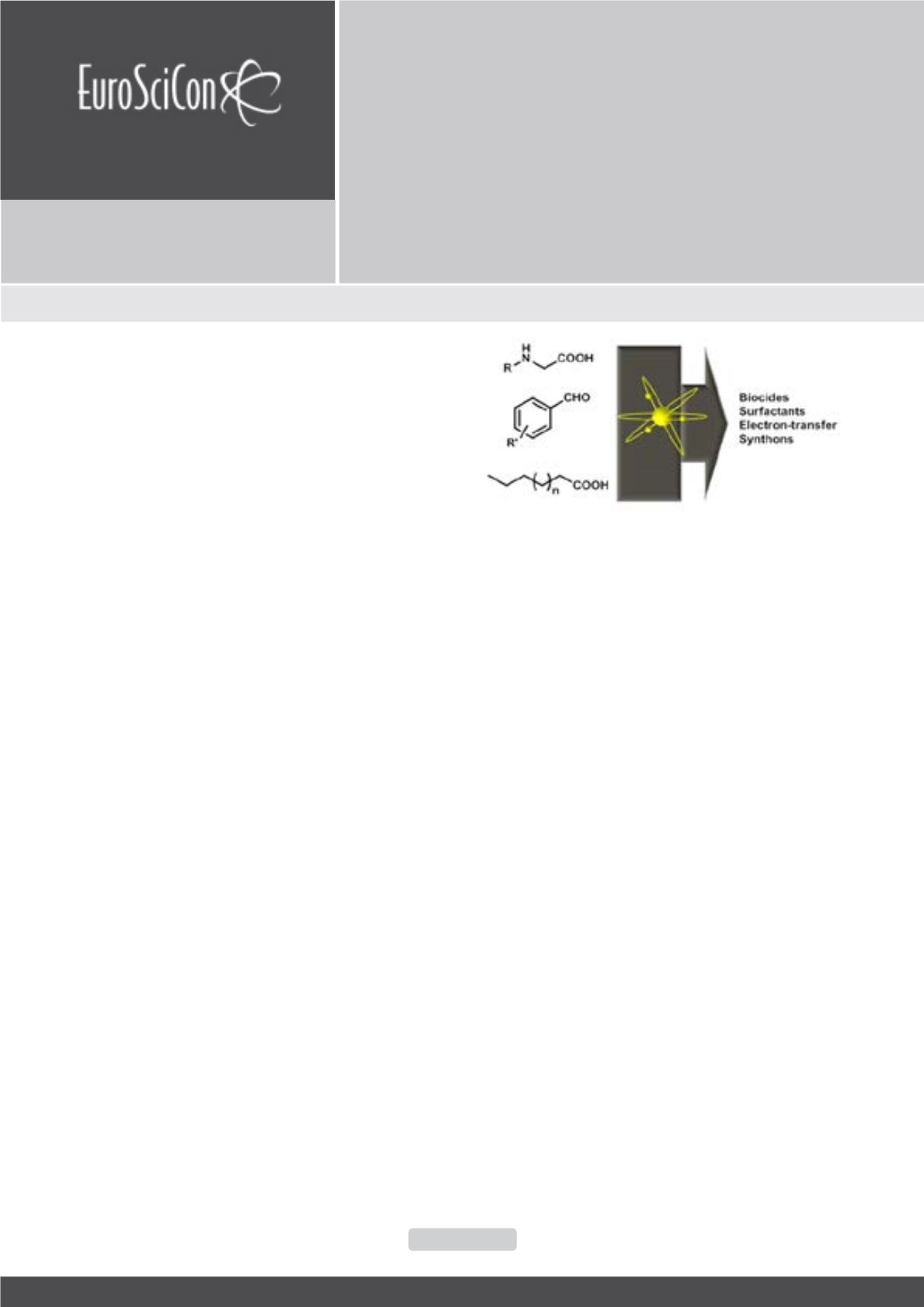

E u r o S c i C o n C o n f e r e n c e o n
Chemistry
2018
Chemistry 2018
Journal of Organic & Inorganic Chemistry
ISSN 2472-1123
F e b r u a r y 1 9 - 2 0 , 2 0 1 8
P a r i s , F r a n c e
Page 68
R
adical chemistry is of great interest in many chemical
areas, such as medicinal chemistry, material chemistry
or polymers, or even formulation, in order to understand
and prevent radical disorders. However, despite the
lasting interest in performing radical syntheses, the use of
innovative techniques for a more eco-friendly approach
remains occasional. We will focus on examples showing how
natural products can undergo radical transformations under
innovative techniques. It will be shown that the combination
of uncommon energetic devices with greener solvent can
shorten reaction times, or even promote the envisioned
Can innovative
chemical technologies
improve radical
chemistry?
E Banaszak-Léonard, C Imbs
and V Jeux
TIMR EA 4297, UTC/ESCOM, France
reaction. By using aromatic aldehydes, (un)modified aminoacids
or fatty acids, the molecules from such radical processes can
be used in a wide range of applications. Biocides, surfactants,
electron-transfer materials or even synthons are real options for
molecules valorization.
e.leonard@escom.frJ Org Inorg Chem 2018, Volume: 4
DOI: 10.21767/2472-1123-C1-003
















